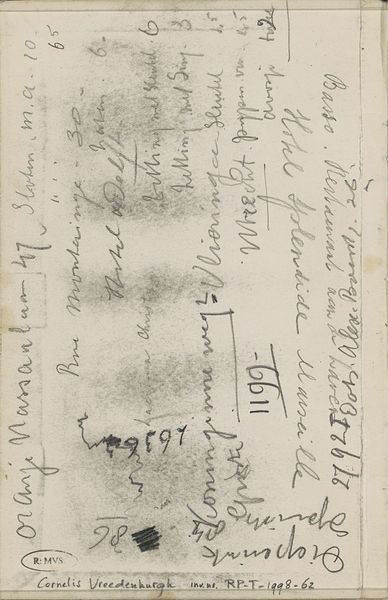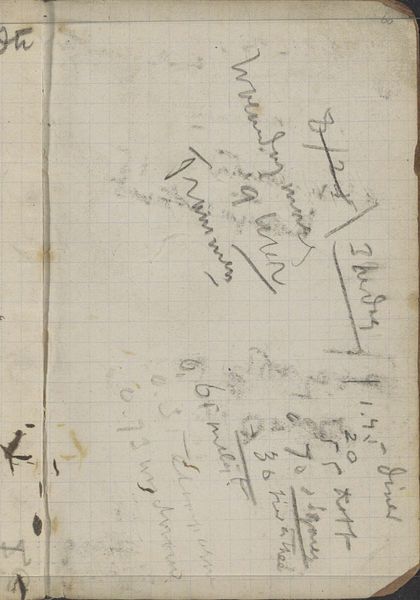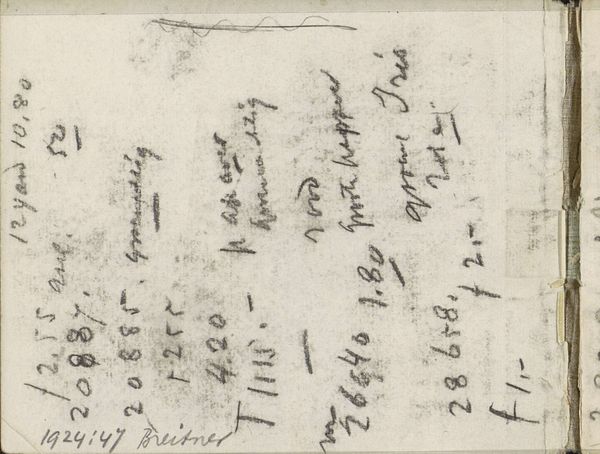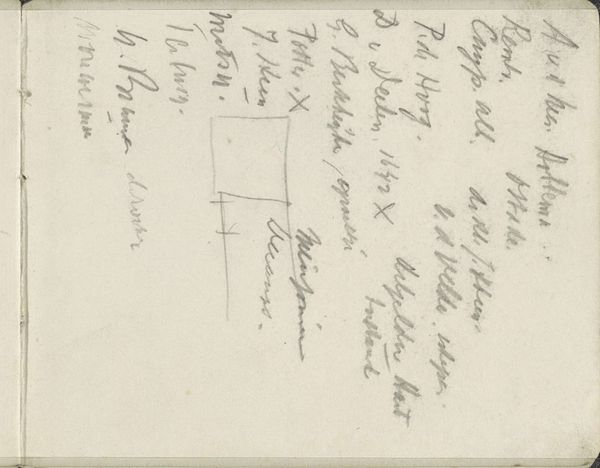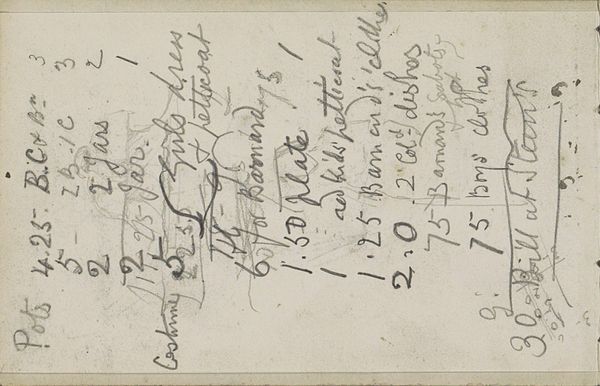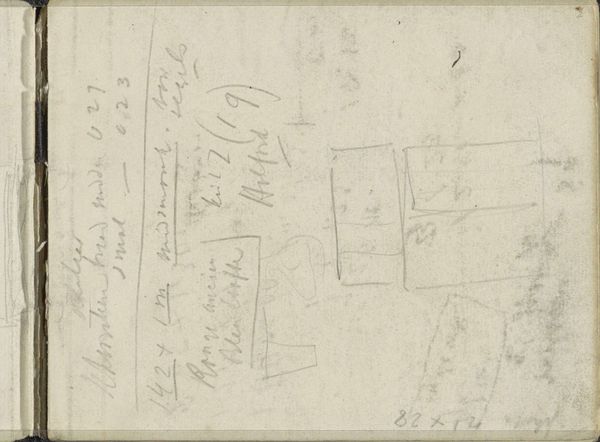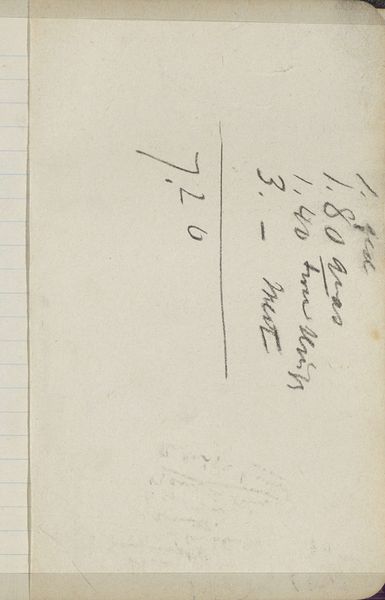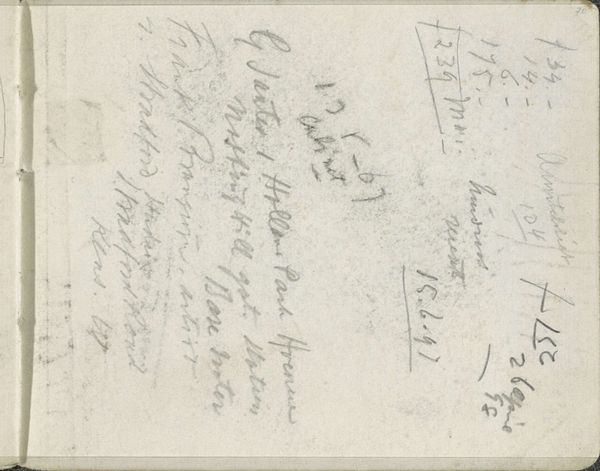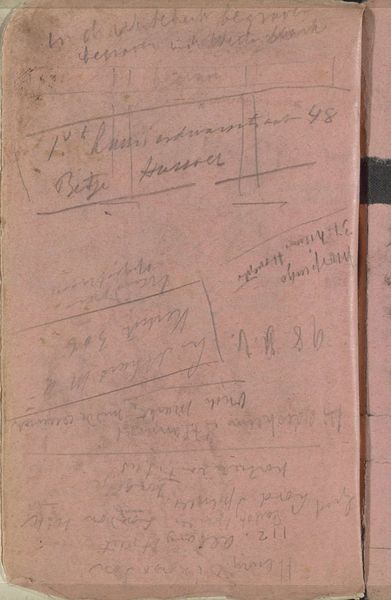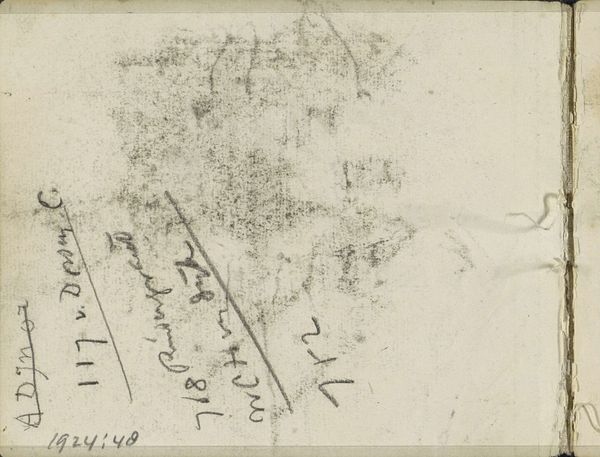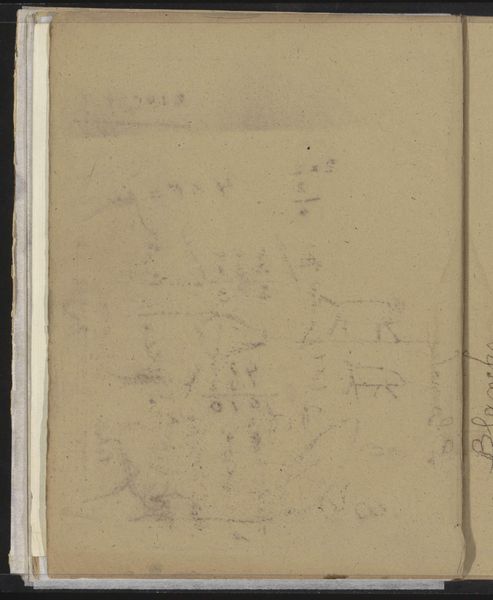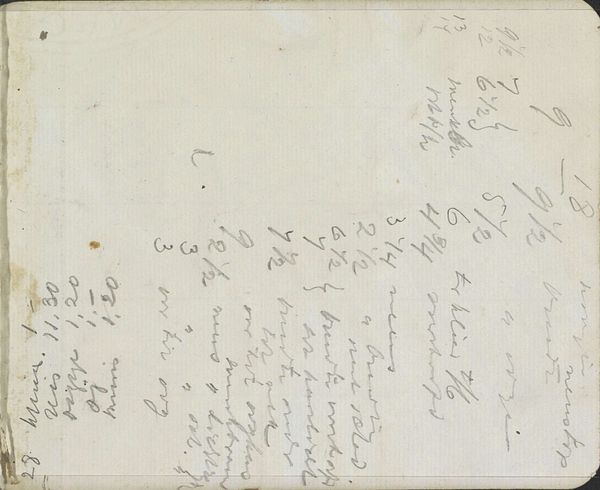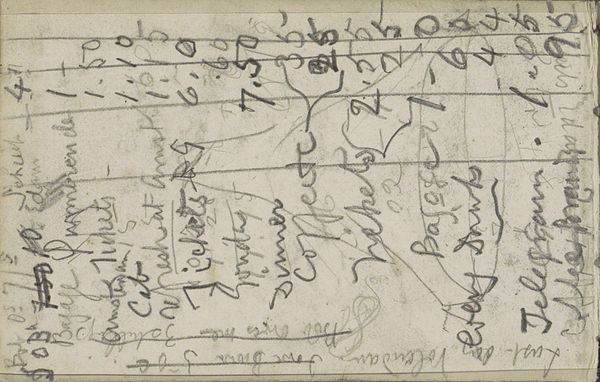
drawing, paper, pencil
#
drawing
#
hand written
#
hand-lettering
#
impressionism
#
hand drawn type
#
hand lettering
#
paper
#
personal sketchbook
#
hand-drawn typeface
#
fading type
#
pencil
#
abstraction
#
sketchbook drawing
#
sketchbook art
#
initial sketch
Copyright: Rijks Museum: Open Domain
Curator: Today we’re looking at "Annotaties," a drawing from around 1886 by George Hendrik Breitner, housed here at the Rijksmuseum. It’s rendered in pencil on paper. Editor: Immediately striking. There's something incredibly intimate about the piece, like stumbling across a private thought process. The soft, fading pencil marks, the almost ethereal quality…it's less a finished piece and more a fleeting glimpse into the artist's mind. Curator: Exactly. It’s fascinating because it gives us access to Breitner’s process. We see calculations, sketches...notes, almost stream-of-consciousness, not necessarily meant for public consumption, but offering valuable insight. During this time, the artistic circles were in a state of great turmoil, reacting to Academic art with movements like Impressionism. Editor: The composition reflects that shift, doesn’t it? Traditional academic art strives for clarity, precision. This feels deliberately…unfinished, almost resistant to the polished expectations. The lack of concrete imagery pushes the piece into abstraction, creating a sense of mystery. It evokes a strong sense of place and mood through minimal means. Curator: I agree. Breitner was a significant figure documenting the rapid changes in Amsterdam's urban landscape at the time. His dedication to rendering fleeting impressions, influenced the social perception of ordinary life. We often associate such documentation with painting and photography but these preparatory notes offer an unique portal to those processes. Editor: It certainly personalizes history. Rather than grand narratives, you have the day-to-day considerations of a working artist trying to make sense of their surroundings. Seeing these rough calculations really brings Breitner closer to the present day. Curator: Precisely. This small drawing encourages us to examine what we deem worthy of preservation, and the myriad ways an artist responds to, and shapes, the world around them. Editor: Indeed. Thank you for elucidating it, this glimpse behind the scenes enhances the museum-viewing experience.
Comments
No comments
Be the first to comment and join the conversation on the ultimate creative platform.
